 W
WThe Antesaka, also known as Tesaka, or Tesaki, are an ethnic group of Madagascar traditionally concentrated south of Farafangana along the south-eastern coast. They have since spread more widely throughout the island. The Antesaka form about 5% of the population of Madagascar. They have mixed African, Arab and Malayo-Indonesian ancestry, like the western coastal Sakalava people of Madagascar from whom the clan derives. They traditionally have strong marriage taboos and complex funeral rites. The Antesaka typically cultivate coffee, bananas and rice, and those along the coast engage in fishing. A large portion of the population has emigrated to other parts of the island for work, with an estimated 40% of emigrants between 1948 and 1958 permanently settling outside the Antesaka homeland.
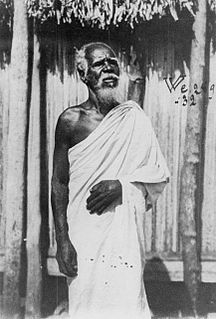 W
WThe Antambahoaka are the least numerous ethnic group in Madagascar, numbering around 50,000 in 2013. They inhabit a small region along the southeastern coast of Madagascar near Mananjary and share their origins with the partially Arab Antaimoro people, from whom the group split in the 15th century under a leader named Ravalarivo. Very little is known about the history of this group after its founding. The Antambahoaka speak a dialect of the Malagasy language, which is a branch of the Malayo-Polynesian language group derived from the Barito languages, spoken in southern Borneo.
 W
WThe Antankarana are an ethnic group of Madagascar inhabiting the northern tip of Madagascar, around Antsiranana. Their name means "the people of the tsingy," the limestone rock formations that distinguish their traditional territory. The tsingy of the Antankarana may be visited at the Ankarana Reserve. There are over 50,000 Antakarana in Madagascar as of 2013.
 W
WThe Antanosy is a Malagasy ethnic group who primarily live in the Anosy region of southeastern Madagascar, though there are also Antanosy living near Bezaha, where some of the Antanosy moved after the Merina people conquered Anosy. An estimated 360,000 people identify as Antanosy as of 2013.
 W
WThe Bara people are a Malagasy ethnic group living in the southern part of the central plateaus of Madagascar, in the Toliara Province, concentrated around their historic capital at Ihosy. The Bara are the largest of the island's zebu-herding peoples and have historically lived a semi-nomadic lifestyle, although an increasing proportion are practicing agriculture. Bara society is highly patriarchal and endogamy and polygamy are practiced among some Bara tribes. Young men practice cattle rustling to prove their manhood before marriage, and the kilalaky musical and dance tradition associated with cattle rustlers has gained popularity across the island.
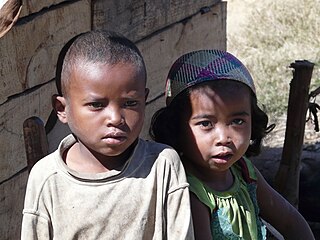 W
WThe Betsileo are a highland ethnic group of Madagascar, the third largest in terms of population. They chose their name, meaning "The Many Invincible Ones", after a failed invasion by King Ramitraho of the Menabe kingdom in the early 19th century.
 W
WThe Betsimisaraka are the second largest ethnic group in Madagascar after the Merina and make up approximately fifteen percent of the Malagasy people. They occupy a large stretch of the eastern coastal region of Madagascar, from Mananjary in the south to Antalaha in the north. The Betsimisaraka have a long history of extensive interaction with European seafarers and traders that produced a significant subset with mixed European-Malagasy origins, termed the zana-malata. European influence is evident in the local valse (waltz) and basesa musical genres, which are typically performed on the accordion. Tromba ceremonies feature strongly in Betsimisaraka culture.
 W
WThe Bezanozano are believed to be one of the earliest Malagasy ethnic groups to establish themselves in Madagascar, where they inhabit an inland area between the Betsimisaraka lowlands and the Merina highlands. They are associated with the vazimba, the earliest inhabitants of Madagascar, and the many vazimba tombs throughout Bezanozano territory are sites of pilgrimage, ritual and sacrifice, although the Bezanozano believe the descendants among them of these most ancient of ancestors cannot be identified or known. Their name means "those of many small plaits" in reference to their traditional hairstyle, and like the Merina they practice the famadihana reburial ceremony. There were around 100,000 Bezanozano living in Madagascar in 2013.
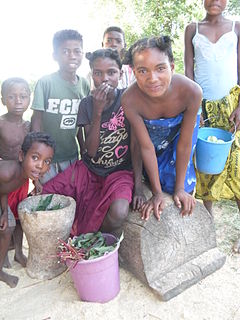 W
WThe Mahafaly are an ethnic group of Madagascar that inhabit the plains of the Betioky-Ampanihy area. Their name means either "those who make holy" or "those who make happy", although the former is considered more likely by linguists. In 2013 there were an estimated 150,000 Mahafaly in Madagascar. The Mahafaly are believed to have arrived in Madagascar from southeastern Africa around the 12th century. They became known for the large tombs they built to honor dead chiefs and kings. Mainly involved in farming and cattle raising, they speak a dialect of the Malagasy language, which is a branch of the Malayo-Polynesian language group.
 W
WThe Makoa are an ethnic group in Madagascar descended from slaves traded through the major slave trading ports of northern Mozambique in an area mainly populated by the Makua people. They are among the last African diaspora communities in the world to issue from the slave trade. They are sometimes classified as a subgroup of the fishing peoples known as the Vezo, although the Makoa maintain a distinct identity, one reinforced by their larger physical stature and historic employment as police officers by the French colonial administration.
 W
WThe Malagasy are an Austronesian ethnic group native to the island country of Madagascar. They are divided into two subgroups: the "Highlander" Merina, Sihanaka and Betsileo of the central highlands around Antananarivo, Alaotra (Ambatondrazaka) and Fianarantsoa, and the "coastal dwellers" elsewhere in the country.
 W
WThe Merina people are the largest ethnic group in Madagascar. They are the "highlander" Malagasy ethnic group of the African island and one of the country's eighteen official ethnic groups. Their origins are mixed, predominantly with Malayo-Indonesians arriving before the 5th century AD, then many centuries later by Arabs, Africans and other ethnic groups. They speak the Merina dialect of the official Malagasy language of Madagascar.
 W
WThe Sihanaka are a Malagasy ethnic group concentrated around Lake Alaotra and the town of Ambatondrazaka in central northeastern Madagascar. Their name means the "people of the swamps" in reference to the marshlands around Lake Alaotra that they inhabit. While rice has long been the principal crop of the region, by the 17th century, the Sihanaka had also become wealthy traders in slaves and other goods, capitalizing on their position on the main trade route between the capital of the neighboring Kingdom of Imerina at Antananarivo and the eastern port of Toamasina. At the turn of the 19th century they came under the control of the Boina Kingdom before submitting to Imerina, which went on to rule over the majority of Madagascar. Today the Sihanaka practice intensive agriculture and rice yields are higher in this region than elsewhere, placing strain on the many unique plant and animal species that depend on the Lake Alaotra ecosystem for survival.
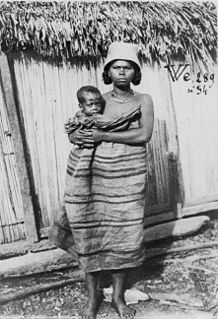 W
WThe Tanala are a Malagasy ethnic group that inhabit a forested inland region of south-east Madagascar near Manakara. Their name means "people of the forest." Tanala people identify with one of two sub-groups: the southern Ikongo group, who managed to remain independent in the face of the expanding Kingdom of Imerina in the 19th century, or the northern Menabe group, who submitted to Merina rule. Both groups trace their origin back to a noble ancestor named Ralambo, who is believed to be of Arab descent. They were historically known to be great warriors, having led a successful conquest of the neighboring Antemoro people in the 18th century. They are also reputed to have particular talent in divination through reading seeds or through astrology, which was brought to Madagascar with the Arabs.
 W
WThe Tsimihety are a Malagasy ethnic group who are found in the north-central region of Madagascar. Their name means "those who never cut their hair", a behavior likely linked to their independence from Sakalava kingdom, located to their west, where cutting hair at the time of mourning was expected. They are found in mountainous part of the island. They are one of the largest Malagasy ethnic groups and their population estimates range between 700,000 and over 1.2 million. This estimation places them as the fourth-largest ethnicity in Madagascar.
 W
WThe Vazimba, according to popular belief, were the first inhabitants of Madagascar. While beliefs about the physical appearance of the Vazimba reflect regional variation, they are generally described as smaller in stature than the average person, leading some scientists to speculate that they may have been a pygmy people who migrated from the islands that constitute modern-day Indonesia and settled in Madagascar over the course of the period between 350 BCE–500 CE. Scientific evidence confirms the first arrival and subsequent increase of human settlers on the island during this period, but the pygmy theory has not been proven. Stories about the Vazimba form a significant element in the cultural history and collective identity of the Malagasy people, ranging from the historical to the supernatural, inspiring diverse beliefs and practices across the island. They have analogs in some other Austronesian cultures, including the Menehunes in Hawaii.
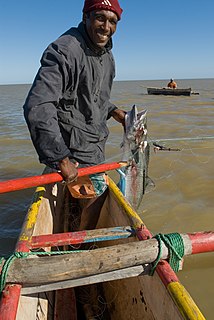 W
WThe Vezo is the term the semi-nomadic coastal people of southern Madagascar use to refer to people that have become accustomed to live from sea fishing. The Vezo speak a dialect of the Malagasy language, which is a branch of the Malayo-Polynesian language group derived from the Barito languages, spoken in southern Borneo. They currently populate most of the littoral zone along Madagascar's west coast between Toliara and Mahajanga.
 W
WThe Zafimaniry are a sub-group of the Betsileo ethnic group of Madagascar. They live in the forested mountains of the southern central highlands southeast of Ambositra, between the neighboring Betsileo and Tanala peoples. There are approximately 100 Zafimaniry villages, which support a population of approximately 25,000. The Zafimaniry speak a dialect of the Malagasy language, which is a branch of the Malayo-Polynesian language group which comes from the Barito languages, that are spoken in southern Borneo.
 W
WThe Zafisoro are a Malagasy ethnic group inhabiting a portion of the southeastern coast of Madagascar. The Zafisoro speak a dialect of the Malagasy language, which is a branch of the Malayo-Polynesian language group derived from the Barito languages, spoken in southern Borneo.